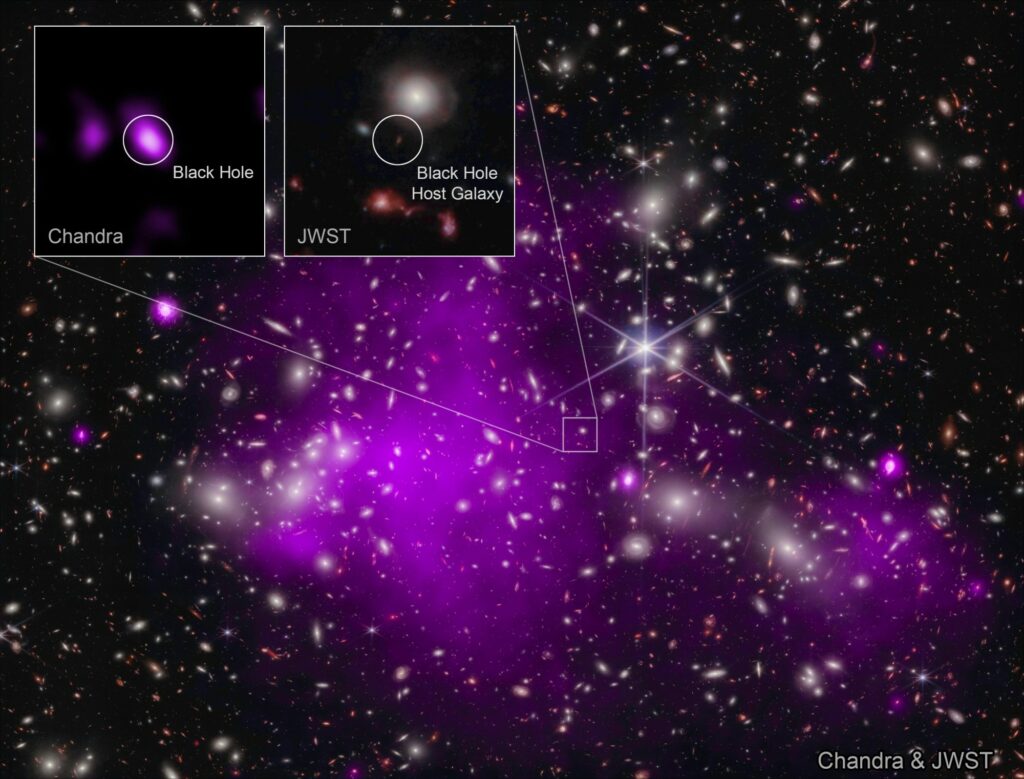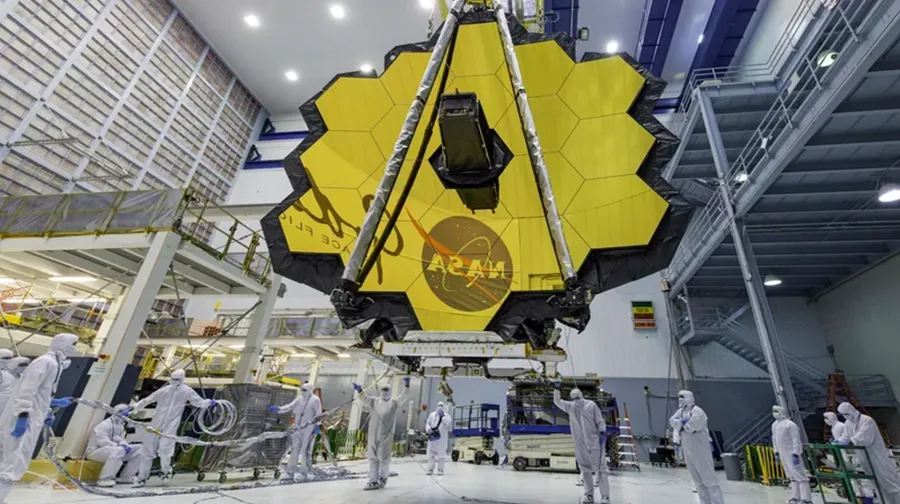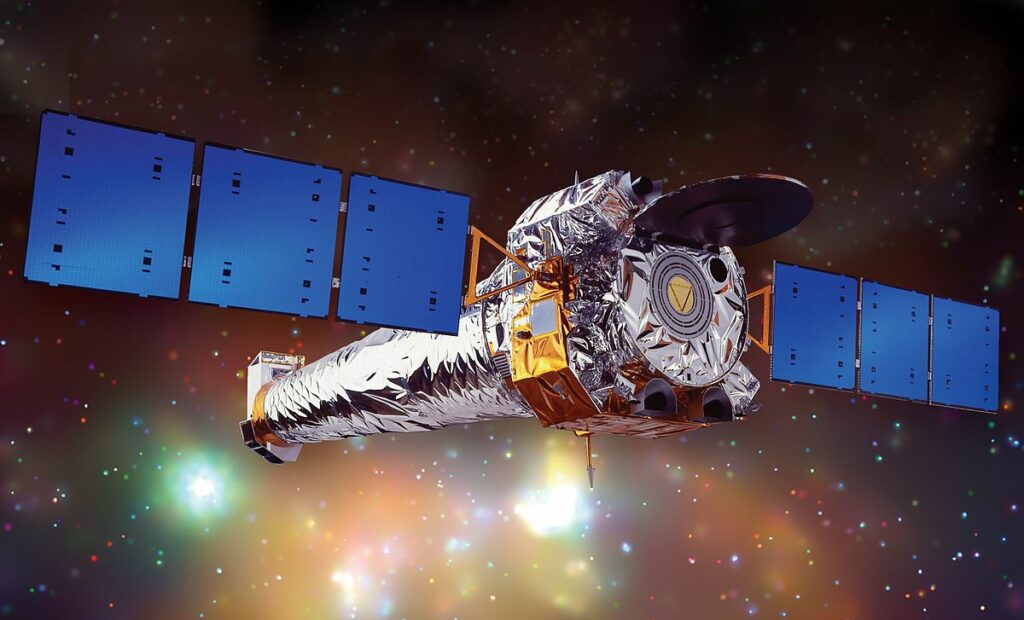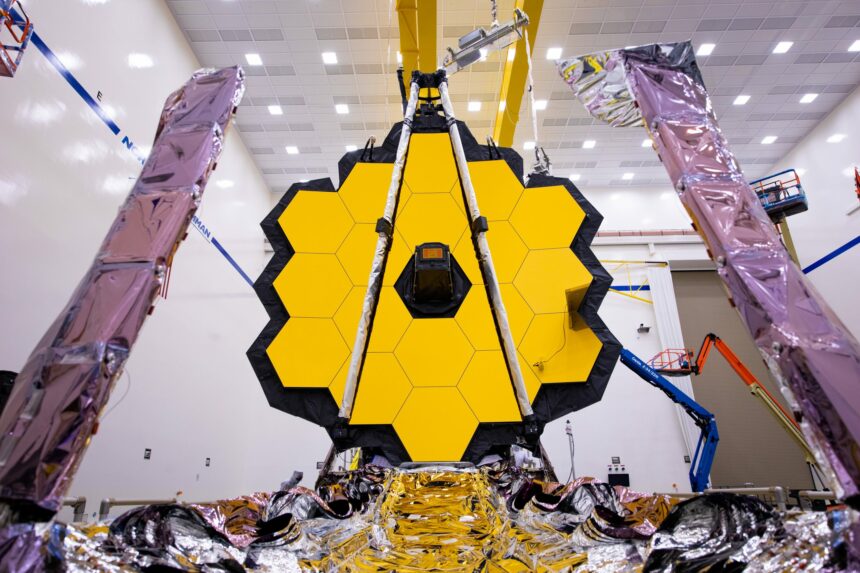Astronomers have made a remarkable discovery, uncovering the most distant black hole yet seen in X-rays, using NASA’s advanced telescopes. This black hole is in a unique early growth stage where its mass is similar to that of its host galaxy, shedding light on the formation of supermassive black holes in the universe.

By combining data from NASA’s Chandra X-ray Observatory and the James Webb Space Telescope, a team of researchers identified a growing black hole only 470 million years after the Big Bang. This finding may provide insights into how the first supermassive black holes in the universe originated.
The black hole was located in a galaxy named UHZ1 within the galaxy cluster Abell 2744, positioned 3.5 billion light-years away from Earth. However, the James Webb Space Telescope revealed that the galaxy is much farther, at 13.2 billion light-years from Earth when the universe was only 3% of its current age.
Over two weeks of observations with Chandra, the researchers detected intense, superheated, X-ray-emitting gas in this galaxy, a characteristic sign of a growing supermassive black hole. Gravitational lensing, a magnifying effect caused by intervening matter in Abell 2744, boosted the light from the galaxy and the X-rays from the gas around the black hole, enhancing the infrared signal detected by Webb.

This discovery is crucial for understanding the formation of supermassive black holes soon after the Big Bang. It raises questions about whether they originate from the collapse of massive gas clouds, resulting in black holes with masses ranging from about 10,000 to 100,000 times that of the Sun, or if they are the result of explosions of the first stars, creating black holes weighing between about 10 and 100 times the mass of the Sun.
The researchers found strong evidence that the newly discovered black hole was born massive, with an estimated mass between 10 and 100 million times that of the Sun. This mass range is comparable to the mass of all the stars in the galaxy where it resides. This contrasts with the black holes in the centres of galaxies in the nearby universe, which usually contain only about a tenth of a per cent of the mass of their host galaxy’s stars.

These findings have opened up new avenues for research into the early universe, using data from Webb and other telescopes to better understand its secrets. The James Webb Space Telescope has played a significant role in these discoveries, demonstrating the potential of this groundbreaking instrument for unravelling the mysteries of our universe.








